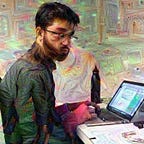General Intelligence
Live Facial Recognition Is Spreading Around the World
The surveillance technology can already be found in Argentina, India, and soon the United States
 Here’s how live facial recognition generally works: As a camera records video, an algorithm scans each frame to find faces. If a face is detected, it’s analyzed and matched against a database or watchlist by another algorithm.
Here’s how live facial recognition generally works: As a camera records video, an algorithm scans each frame to find faces. If a face is detected, it’s analyzed and matched against a database or watchlist by another algorithm.
Today in the United States, this isn’t the norm. While it’s become common for law enforcement, from local police to the federal government, to use facial recognition, it’s often used retrospectively. That means instead of scanning everyone’s face whose face appears in a live video, they analyze an image of a suspect’s face from a crime scene and compare it against a mugshot database, or some other database of face images, to find out who it is.
But that reluctance to embrace live facial recognition is changing — it already has changed around the world. We’ve seen that in Surat, India, and Buenos Aires, Argentina, live facial recognition is already here. In Buenos Aires, it has been used to detain nearly 600 people, and not all of them are even real suspects. One man was detained for six days for having the same name as a suspect in a crime, which police…
